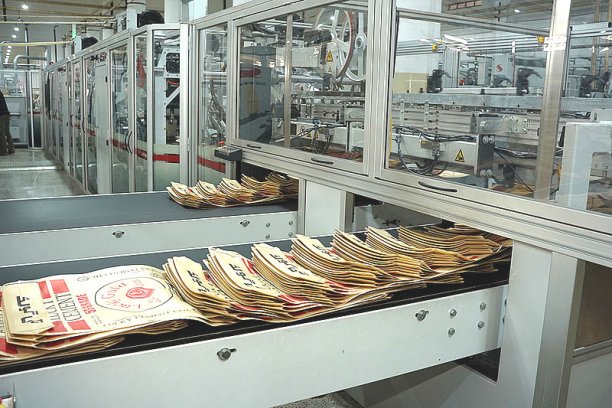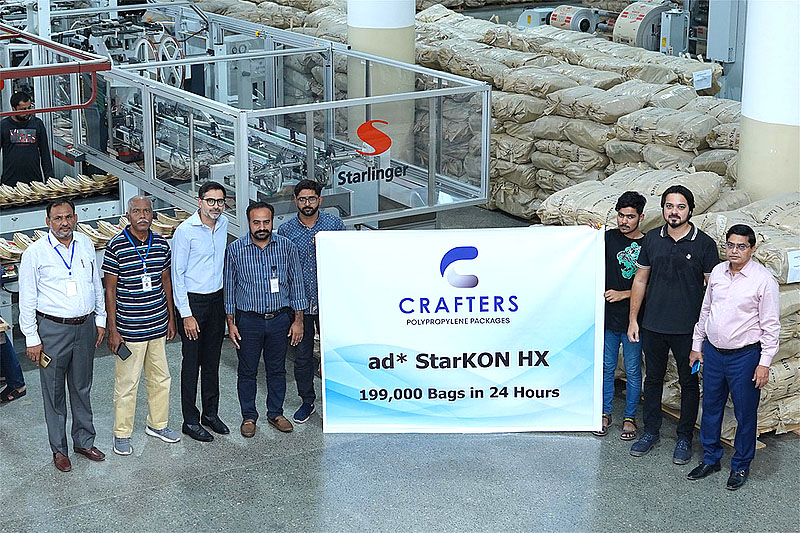
Two AZL partners further commercialisation efforts
Tapes used for fabric production are made of polypropylene in a special extrusion process that includes stretching and annealing.

8th December 2023
Innovation in Textiles
|
Karachi, Pakistan
Woven packaging specialist Crafters, based in Karachi, Pakistan, has achieved a new record with the production of 199,000 Ad*Star block bottom sacks in 24 hours on a single conversion line.
The Ad*Star sacks made of woven polypropylene tape fabric are increasingly used worldwide for the packaging of dry bulk goods and produced on ad*starKON HX conversion lines supplied by Starlinger, headquartered in Vienna, Austria.
Crafters commissioned two of these lines in May this year and has been continuously ramping up production to meet growing demand.
“Such a high output is only possible due to the excellent production quality of the Starlinger equipment, from tape production to weaving, coating and printing and on to sack conversion,” says Omair Rehman, director of Crafters. “Because of the uniform high quality of the PP fabric, the Starlinger conversion lines operate with high efficiency and minimum downtimes. There is hardly any interruption of production due to jammed fabric or other technical issues apart from the necessary brief stops such as roll changes. In addition, maintenance work as well as sack format change on the conversion line are quick and easy.”

Crafters supplies the Ad*Star sacks primarily to the cement industry, one of its main customers being Pakistan’s biggest cement producer Lucky Cement. With a sack weight of 65g for a filling volume of 50kg, the sacks are currently the lightest on the market for dry bulk goods such as cement. The combination of low packaging weight and high strength is possible due to the woven structure of the sacks. The tapes used for fabric production are made of polypropylene in a special extrusion process that includes stretching and annealing to achieve special characteristics. After the weaving process on circular looms fabric is coated and printed before it is converted to block bottom valve sacks.
“The process is well developed and standardised and you get the strongest sacks with the lowest possible weight,” explains David Grabenweger, Ad*Star product manager at Starlinger. “The strong and resistant PP fabric makes the sacks tearproof which is a big advantage for cement filling companies as it helps to reduce cement loss due to broken sacks – a key factor which also contributes to a low overall CO2 footprint. In addition, the sacks are a mono-material packaging and thus designed for recycling. We have also succeeded in using high shares of recycled polypropylene in tape production without compromising the fabric strength and other important characteristics of the sacks.”

Business intelligence for the fibre, textiles and apparel industries: technologies, innovations, markets, investments, trade policy, sourcing, strategy...
Find out more